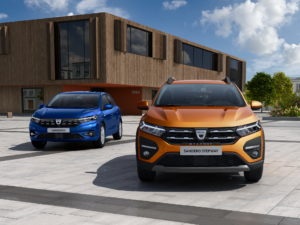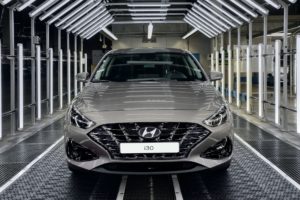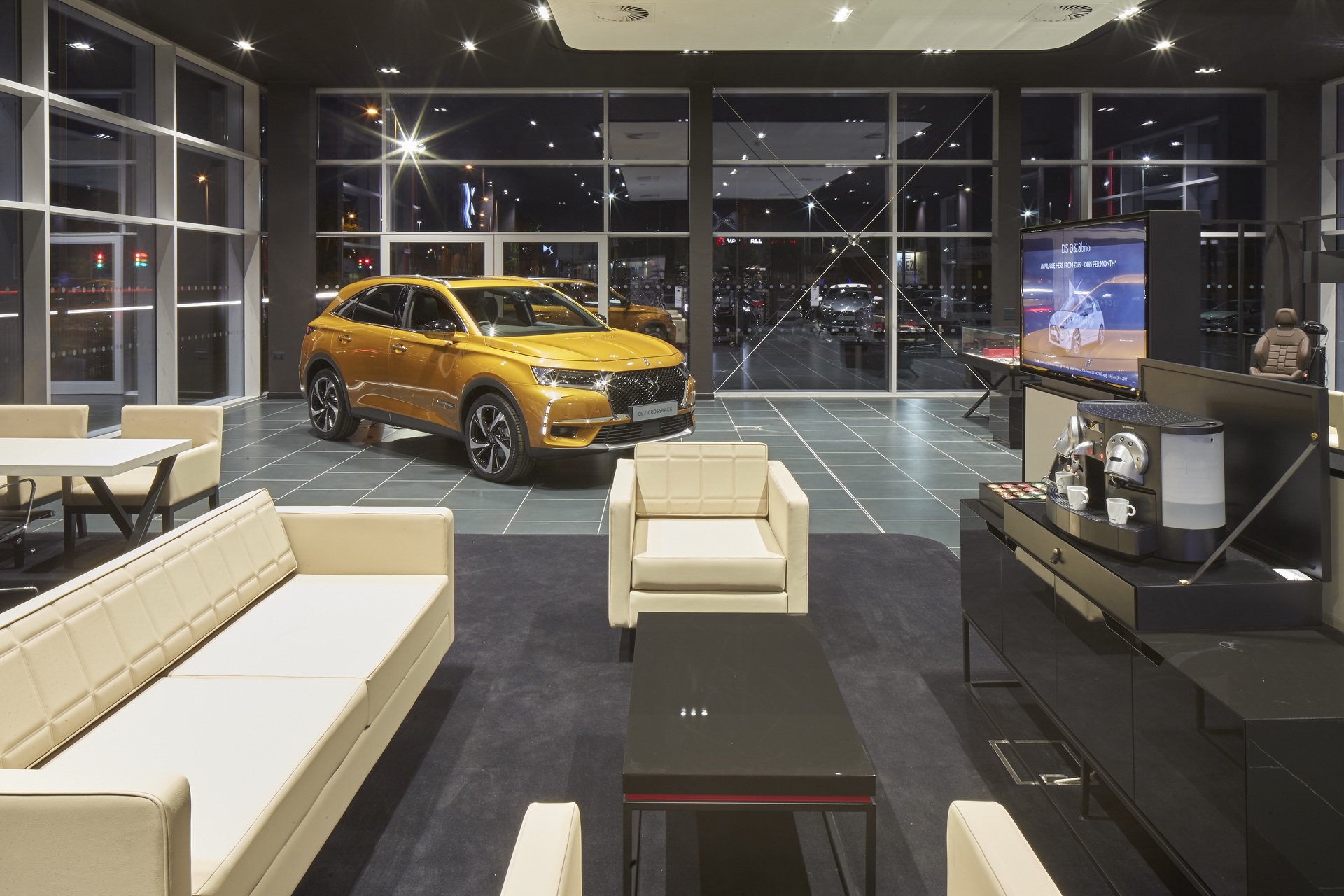Tag Archives: MimboloveIndustry

In a surprising turn of events, the Dacia Sandero has been crowned Europe’s best-selling car for July 2021, beating the VW Golf in its own game. The Romanian budget-friendly supermini sold 20,446 units in July, proving to be quite popular with European buyers and reaching the top spot for the first time ever.
In total, the European market fell by 24 percent last month with 967,830 sales according to JATO, following four months of growth. For comparison, Europe had 1.27 million sales in July 2020 and 1.32 million sales in July 2019 before the pandemic. Most automakers and markets saw a great decline in the new car registrations, not only because of the pandemic but also due to the shortage of semiconductors affecting the availability. Still, 2021 sales for the first seven months of the year are 24 percent higher than the same period of 2020.
Read Also: Toyota Sold Its 50 Millionth Corolla This Summer After 12 Generations And 55 Years
The third generation of the Sandero was officially revealed last year together with the Sandero Stepway and Logan siblings. Unlike its predecessors who were built in dated underpinnings, the new model is based on the latest CMF-B platform by Renault Group. Still, it is one of the cheapest models in the B-Segment.
Whilst looking fairly modern and offering adequate space for its segment, the cheap price does come at a cost, since the Sandero only managed to grab a two-star safety rating by Euro-NCAP, mostly due to pedestrian protection and standard ADAS equipment. Additionally, the cheapest variant is not equipped with an infotainment touchscreen, offering a smartphone dock instead.
Despite losing the top spot, Volkswagen is the brand with the most cars in the top-10 thanks to the Golf (19,425 units) in second place, the Polo (17,343 units) in fourth, the T-Roc (16,494 units) in fifth, and the T-Cross (14,170 units) in seventh place. It remains Europe’s best-selling brand despite a 19 percent drop.
July’s best-seller list also includes the Toyota Yaris (18,858 units) who came third, the Hyundai Tucson (14,883 units) in sixth place, the Dacia Duster (13,329 units) in eighth place, the Ford Puma (13,283 units) in ninth place, and the rival Peugeot 2008 (13,134 units) in 10th place. As we can see, six out of 10 best-selling cars were SUVs, three were B-Segment superminis and only one was a C-Segment hatchback.
Volkswagen tops the charts in electric vehicles with the ID.3 (5,433 units) remaining the best-selling BEV, ahead of the Renault Zoe (3,976), the Kia Niro EV (3.953 units), and other rivals. In PHEVs, the Ford Kuga (4,247) came first, followed by the Peugeot 3008 (3.039 units) and the Volvo XC40 (2,931).
Combined sales of BEV and PHEV models in July were 160,646 units, accounting for 17 percent of all car sales. While this is impressive, Automotive News Europe reports that it wasn’t enough to surpass diesel car’s 22 percent share, with gasoline vehicles still the most popular option with a conquering 59 percent share.

The facelifted Hyundai i30 will enter production on May 25 at the carmaker’s plant in Nošovice, the Czech Republic.
It will be a pretty big deal for Hyundai Motor Manufacturing Czech (HMMC), as the previous-generation i30 was the first vehicle ever built at the Nošovice plant when mass production started in November 2008. The i30 compact hatchback was the first Hyundai car to carry the “i” prefix and proved to be quite successful in Europe, with more than one million units sold on the continent since its launch in 2007.
“The i30 has consistently been one of our most popular cars in Europe. It is truly made for Europe in Europe, starting from the design and development to the final assembly,” said Andreas-Christoph Hofmann, Vice President Marketing and Product at Hyundai Motor Europe. “The latest model adopts a range of enhancements to make it even more attractive to our customers who are looking for a stylish, safe, reliable car in the C-segment,” the executive added.
See Also: 2020 Hyundai i20 Goes Official, Features New Mild Hybrid Powertrain
For the mid-cycle makeover, the Hyundai i30 remains available in three body styles: Hatchback, Fastback and Wagon. All of them now feature an updated design, new technology, and new powertrains – including a new 48-volt mild hybrid option. In addition, the sporty-looking N Line trim will be available for the first time on the new i30 Wagon (it was previously offered on the Hatchback and Fastback only).
While the exterior design changes are subtle, the facelifted Hyundai i30 gains a tech upgrade inside courtesy of a large 10.25-inch touchscreen infotainment system paired with a 7-inch digital gauge cluster. Android Auto and Apple CarPlay compatibility comes standard and wireless phone charging is also present.
The engine lineup has been upgraded as well with a 48-volt mild-hybrid system offered for the entry-level 118 HP (120 PS) 1.0-liter T-GDI turbocharged three-cylinder petrol engine as well as the 134 HP (136 PS) 1.6-liter diesel and 157 HP (159 PS) 1.5-liter T-GDI turbo-four petrol. All engines offer the choice of a six-speed manual or a seven-speed dual-clutch.

The UK’s new post-Brexit tariff strategy, in place for January 2021, has finally been agreed upon, maintaining a 10% tariff on cars but cutting levies on supply chain imports. The new regime is said to be less complex than the EU system.
Britain is now looking for free trade agreements with countries around the world and wishes to have deals in place covering 80% of all British trade by 2022, as reported by Reuters.
The regime, also known as UK Global Tariff, is also said to be cheaper than the EU’s Common External Tariff, and will also apply to countries with which the UK has no agreement, while removing all tariffs below 2%.
Read Also: Brexit Could Result In Nissan Increasing Its Market Share In UK
“Our new Global Tariff will benefit UK consumers and households by cutting red tape and reducing the cost of thousands of everyday products,” said International Trade Secretary, Liz Truss.
The British government also said that tariffs will be eliminated on a wide range of products, with 60% of trade coming into the UK tariff-free, either on WTO terms or through existing preferential access. However, the UK will keep in place tariffs on products competing with industries such as agriculture, automotive and finishing, cutting levies on 30 billion pounds ($37 billion) worth of imports entering UK supply chains.
“Keeping agricultural protection makes sense as a bargaining chip for the EU & US trade negotiations. But means big cost increases for agriculture imports if no UK-EU FTA,” said Thomas Sampson, Associate professor at the London School of Economics.
The UK also wants to remove tariffs on products which support energy efficiency and will introduce a temporary zero tariff on goods being used to combat the COVID-19 pandemic – such as personal protective gear.
To summarize, the new trade plan is meant to protect the farming and automotive industry, while scrapping tariffs on household items such as dishwashers, freezers, gardening tools and many food and sanitary items.





